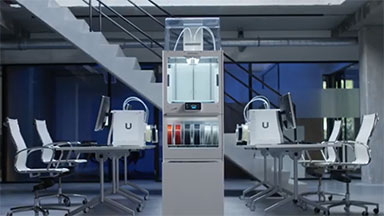GKN Additive Develops 3D Printing Process for Low Alloy Steels
New powder materials are specialized for additive manufacturing with regard to spreadability, laser absorption (Laser AM) and sinterability (Binder Jetting).
Latest News
July 16, 2021
GKN Additive adapts and enhances DP600 like material, a widely used low alloy dual-phase steel in the automotive industry, for additive manufacturing, and enables diverse designs and applications in automotive and in other industrial sectors.
The newly developed metal powder materials DPLA (Dual Phase Low Alloy) and FSLA (Free Sintering Low Alloy) meet similar requirements for mechanical properties as DP600 (HCT600X/C), such as higher ultimate tensile strength (UTS) and low yield strength (YS) to UTS ratio, and can be used in Laser Powder Bed Fusion (DPLA) and Binder Jetting (FSLA) respectively. The powder materials as well as parts manufactured with these materials are available for purchase immediately.
Target customers are the automotive industry, for example, to adapt the design of automotive sheet metal parts, or to develop completely new structural components, but also manufacturers in the industrial sector.
Capabilities of DPLA and FSLA
DPLA and FSLA are new powder materials that are specialized for additive manufacturing with regard to spreadability, laser absorption (Laser AM) and sinterability (Binder Jetting).
“Traditional DP600 offers specific standardized mechanical properties achieved by heat treatment,” says Christopher Schaak, technology manager for Binder Jetting at GKN Additive. “The dual-phase steel AM materials developed by GKN Additive on the other hand are very flexible in their characteristics, as their mechanical properties can be tuned more widely by the heat treatment after the laser or binder jetting process.”
This enables various different use cases in the industrial sector as well and makes the material a candidate for a wide spectrum of customers, as already shown in the IDAM project.
“By using a subsequent heat treatment process to achieve the desired properties with the material within a wide range (medium to high strength properties), an AM provider can use an established printing process that does not need to be changed,” says Sebastian Bluemer, technology manager Laser AM at GKN Additive. “This allows streamlining of internal processes and enables a faster product delivery.”
Before using DPLA and FSLA, GKN would first receive desired characteristics from a customer and then have to develop and qualify a new material for the laser powder bed fusion or binder jetting process to meet these demands.
New Design Possibilities, Potential for Weight Reduction
For manufacturers in the automotive sector for example, these two materials offer a new level of design freedom and potential for weight reduction.
“With these AM processes, manufacturers in the Automotive industry can construct body parts differently than what was possible with traditional sheet metal parts. If you look at a tailored blank, many sheet- metal parts and support parts need to be formed and joined together to achieve a certain stiffness. By using structural components printed with AM on the other hand, you would need less process steps and less material, leading to cost optimization and a weight reduction,” explains Christopher Schaak.
The time it takes for a new product to enter functional validation can be significantly shortened through AM processes.
“Our customers want to know what the new AM material can achieve in their respective use cases,” says Sebastian Bluemer, “and how it can be used. It’s faster to print parts with AM than to retool complete traditional production lines and manufacture the parts the conventional way. This means that AM is a good solution to quickly and functionally validate a material and a component, and to analyze faster and more efficiently, whether the material can help with a specific application or not.”
Besides optimizing existing designs, Binder Jetting and Laser Powder Bed Fusion with the new material can also be used to develop completely new designs (Design for Additive Manufacturing), for example, bionic structures.
Sources: Press materials received from the company and additional information gleaned from the company’s website.
Subscribe to our FREE magazine, FREE email newsletters or both!
Latest News
About the Author
DE’s editors contribute news and new product announcements to Digital Engineering.
Press releases may be sent to them via [email protected].





